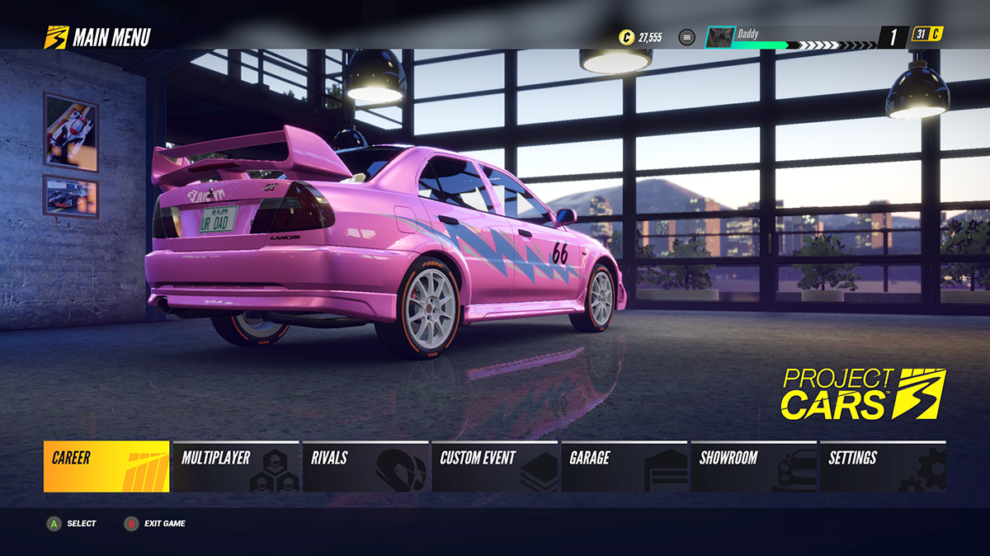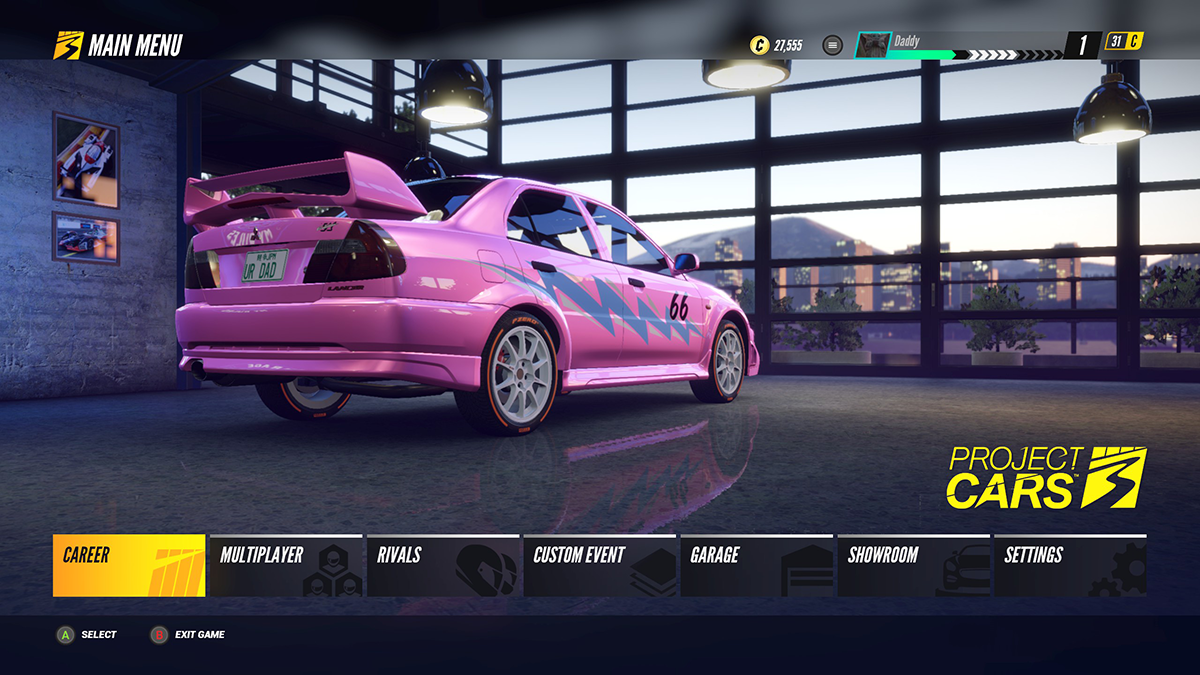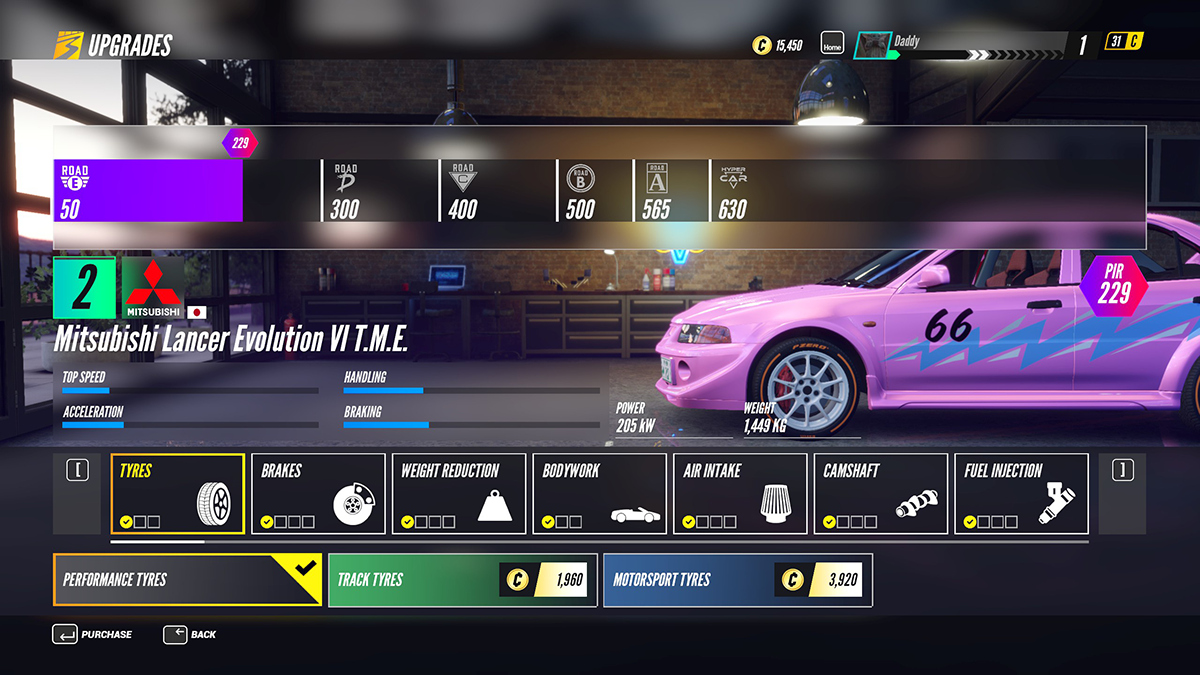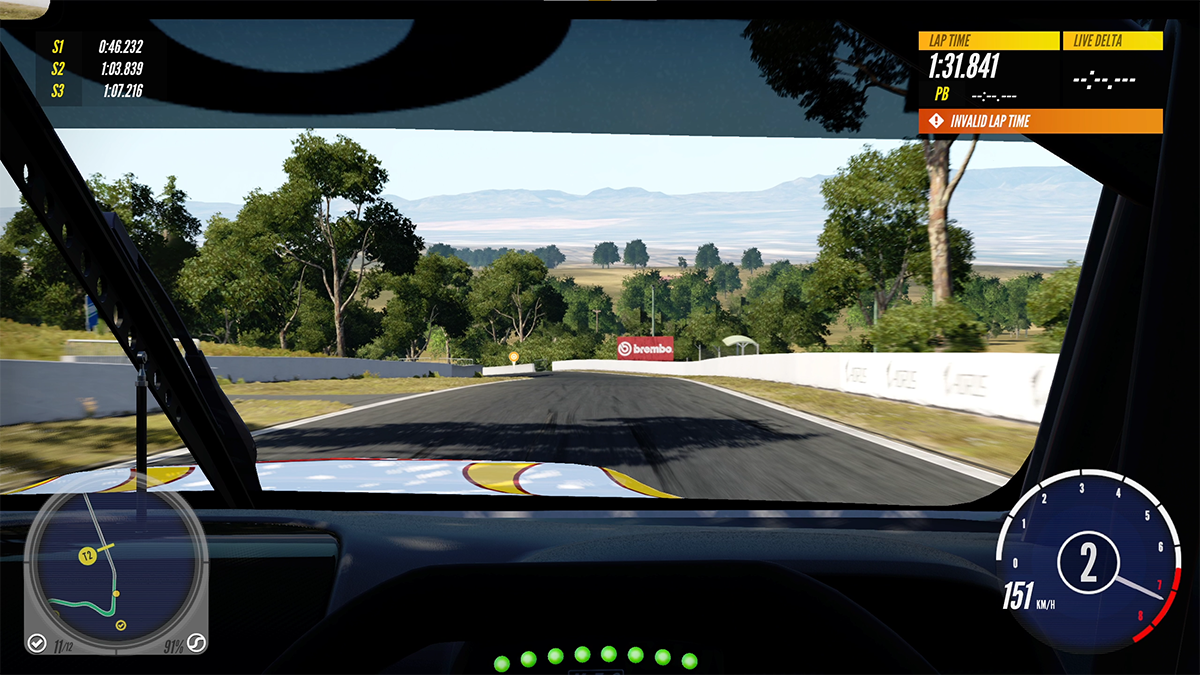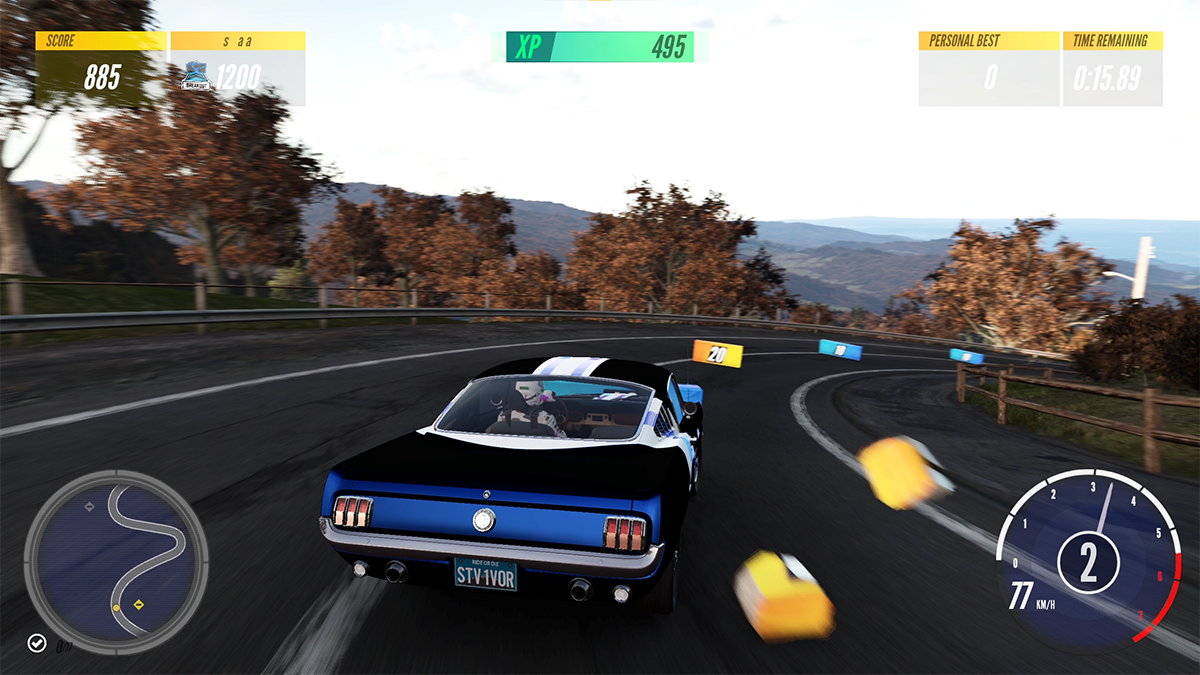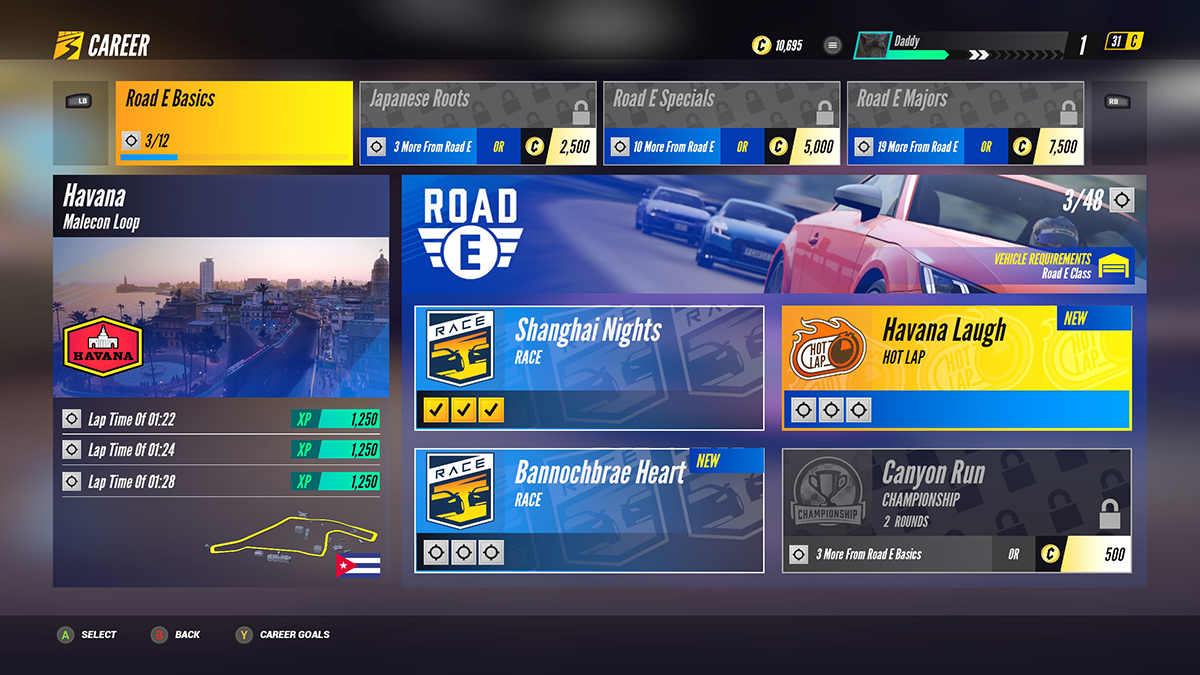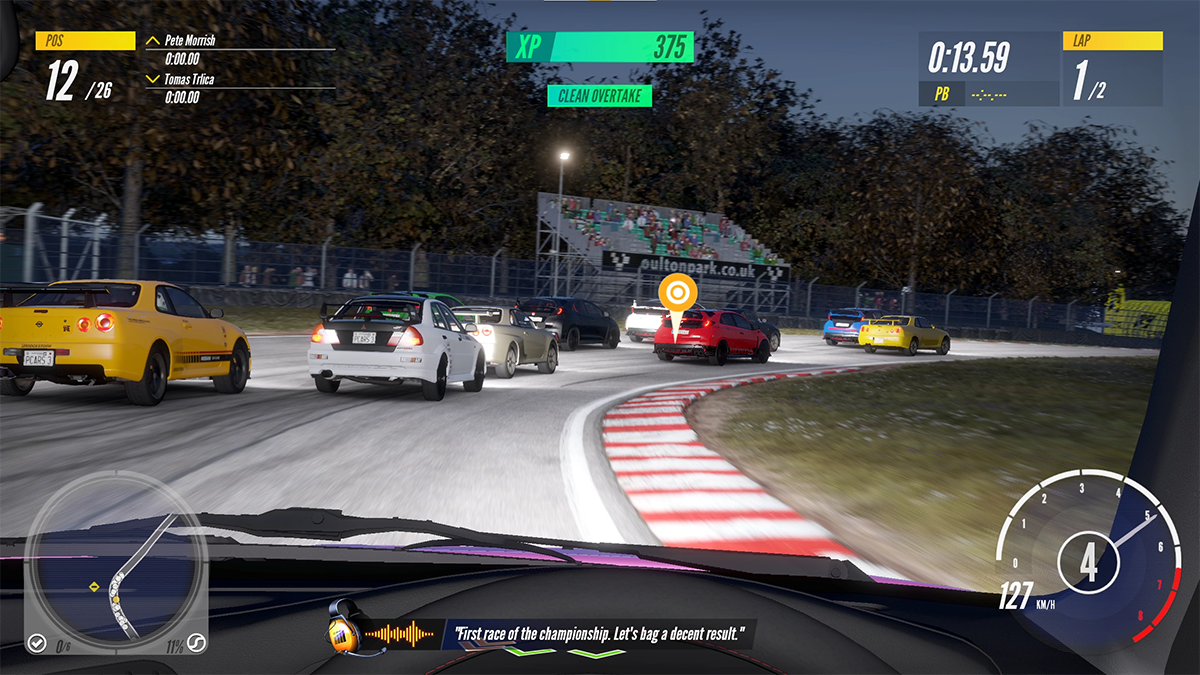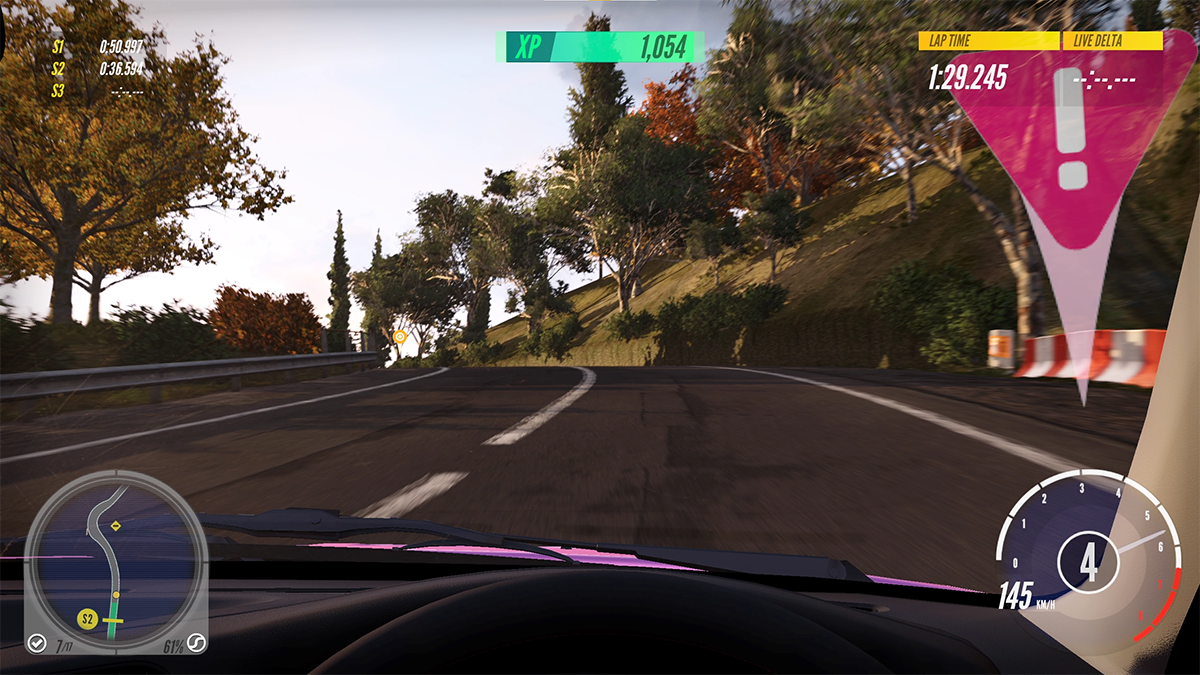The Project CARS series began with a simple goal: combine community input with that of professional racing drivers to create a racing simulator to rival Forza or Gran Turismo. The result was an excellent middle-ground in the sim world between so called “simcade” titles and other full blown racing simulators, with the sequel, Project CARS 2, enjoying a lot of popularity even today.
Project CARS 3 is the latest entry in the Slightly Mad Studios franchise, and the first entry since being acquired by Codemasters in 2019. Codemasters is well known for its stable of racing titles, such as the DiRT series and the official F1 games; as such, many were excited to see how the first Project CARS game under its direction would fair.
It hasn’t been smooth sailing though, with many fans being frustrated at the news that Slightly Mad was steering Project CARS 3 away from its simulation roots and towards a more arcade experience – think more Forza Horizon and less Assetto Corsa. The backlash has been growing, with many fans quick to point out that the “CARS” in the title actually stands for “Community Assisted Racing Simulator”, and that this new direction makes little sense for the series.
Nevertheless, Project CARS 3 is here now with its new arcade coat of paint, and fittingly it brings with it several departures from the tried and true franchise formula. First off is the new career mode which no longer features an extended series of races for you to fight through. You then have new race modes including the Pace Setter and Breakout variants, new customization and car upgrade options and, of course, some new cars and tracks to boot. Fans will be pleased to know that most of the cars and tracks from Project CARS 2 make an appearance too, though with some notable exceptions. How could they miss Spa Francorchamps, really?
Perhaps the most exciting new feature introduced is the ability to both customise and upgrade your car to your liking. While the options available certainly aren’t limitless, you’re now able to pick your favourite ride and give it the pimping it deserves. I picked the Mistubishi Evo VI you’re offered in career mode and began from there. You’re given options for new paint colours, finishes and flourishes, decals, tyre choices, number plate customization and of you can now choose a car number too.
Under the hood your choices become a bit more basic, though you’re still able to pick from a wide variety of performance-giving parts to get your ride moving. Some options give pure performance — such as the camshaft, engine block or your choice of forced induction — while others give you boosts to handling and braking such as brakes (obviously), aero kit and weight reduction.
Combine these and you can quickly have yourself a mean ride to carve up the competition, but be warned: if you don’t balance your choices wisely you can quickly end up exceeding your career mode class power limit. Worse, you could end up with a car that handles like an aircraft carrier. This is a mistake I made almost immediately when given access to the upgrade options. With money in my pocket and performance to find, I of course did what every boy racer does and pumped everything into performance mods to make the car go faster. That particular set of modifications lasted exactly one race, after I found out that while yes, I could go very fast in a straight line, I was totally unable to brake or turn through corners which lead to a very bumper-car like race as I bounced off walls left and right.
With that experience under my belt, I headed back to the garage to find some more balance in my upgrades and get the best overall performance out of my little Evo. The game does a very good job at letting you know when you’re at risk of upgrading your car too much for your current class, though it’s not so good at communicating what each part actually changes.
This is where the system begins to show its shortcomings, as you can’t reasonably have a car that favours either speed or handling perks. If you have too much handling, you’re almost always too slow and uncompetitive. Too much speed though and you’ll never make a corner; the system just forces you into a middle ground of balance that takes all of the excitement out of driving the car.
Once you realise this then the whole upgrade system just becomes about balancing stats and toying with numbers to get a car that isn’t too good at any one thing. Additionally, many of the performance upgrades are very samey and don’t actually make the car feel or sound different. The power always seems to come on the same way and the car floats around corners just like always.
This leads us nicely into a discussion of something that has always been a heel for the Project CARS franchise: car physics. They, alongside the handling model, have always been somewhat of a sore spot for racing sim purists, with many decrying the series to be a poor simulation due to the floaty handling and feel of some of the cars. For me though, Project CARS 2 provided a perfect entry point into the sim racing world, and many of the quirks of the physics model can be simply tuned out with some adjustments to the suspension.
Sadly, Project CARS 3 has thrown all of that out completely, with that feel now gone. Cars no longer react consistently, or how you would expect them to, when hitting ripple strips or kerbs. You can no longer tell when your car is on the edge of traction, and saving a slide becomes a monumental task should you find yourself in one. Traversing Bathurst is a nightmare over its dips and bumps as the car seems to move with a mind entirely of its own.
A good race car with a strong setup feels grounded and balanced, but also right on a knife edge. You can trust the car to power out of a corner or brake consistently and drive it right between an equilibrium of grip and slip. This is completely missing from Project CARS 3. Instead, every car from the very slow to the blazingly quick handles like a boat and wobbles around like you’re out at sea.
The movement is so extreme on some tracks that I felt physically ill during my first few sessions and had to take a prolonged rest just to be able to play again – and I don’t get sea sick. To make matters worse, if you’re hoping to venture past the default setup options on offer then you’ll need to pay in-game currency to unlock them. Yes, that very same currency that you use to purchase cars and upgrades is also required to unlock custom tuning setup slots. How that made it past the design board is beyond me.
I played the majority of my time in Project CARS 3 with a Logitech G29 wheel and pedal set that I’ve spent a lot of time with, including in Project CARS 2. I’m very comfortable with how the wheel should feel, but I was incredibly disappointed with the feedback on offer in this iteration.
It should also be noted that Slightly Mad has specifically mentioned its work on getting your controller feeling good for this outing, though I have to say it’s fallen well short of perfection. I tried one or two races with my Xbox Elite controller and was very disappointed with how the car handled – so much so that I immediately switched back to the G29 to make the game more playable.
To be clear, a controller will never be able to stack up next to a racing wheel in a true simulator, but in more arcade-like titles I’d expect a more crisp input feeling to help you get the most out of your car. Instead, the floaty nature of the handling means that small adjustments quickly become slides and you find yourself totally out of control. I’m sure that, like with Project CARS 2, the community will eventually settle on some good controller settings for this one, but for now it will almost certainly be a challenge for anyone without a wheel.
Another much touted change in this new release is its revamped career mode. Previous titles allowed players to begin racing at almost any level and work their way through racing series to unlock one of the top tiers such as Formula A. Players could run practice sessions, qualify and then race against AI, before eventually earning enough points to graduate out of their chosen class and into the next. This is almost entirely gone in Project CARS 3, as it continues to ditch simulation aspects and pushes towards an arcade career mode. Many of the new features would be most at home in a mid 2000s Need for Speed game rather than this franchise, but nevertheless they’re here to stay.
Each career mode is divided into classes, with your foray beginning in Class E. You’re initially offered a choice of three cars — either the Toyota 86, the Mitsubishi Evo VI or a 2016 Honda Civic. I, as previously mentioned, chose the Evo and jumped into the first round of races. Each round is divided into four separate races, with the fourth one only unlocking when you’ve performed well enough in the previous three. Available races range from your standard circuit race to solo hot laps and even include the occasional Breakout race to mix things up. The fourth and final race is normally an event, with two races at the same track and points up for grabs for place finishers. Earn the most points across the event and you’ll take home the win.
There’s nothing overly new or ground-breaking on offer in the career mode, and it’s a slog to make your way through races and up to higher classes. Most of the races on offer early on are only two or three laps in length, and often take less than three minutes to complete. This leads to every race feeling samey, as you’re never able to build track knowledge with such little time spent at each circuit.
This is further compounded with the other major change to career mode: no more practice or qualifying. While boring to some, practice and qualifying are cornerstones of any real circuit racing experience. I can certainly see why doing away with them is a tempting option for any arcade focused title. I rarely used an entire practice session in other simulators, just a lap or two to get acquainted prior to qualifying, and many other arcade racers feature huge glowing arrows (Project CARS 3 does have an approximation of this with its cornering boards, but those are another problem entirely) or long, easy to traverse tracks to remove the need to learn a circuit first.
Dropping the option to even qualify at all is unforgiveable. It amounts to nothing more than manufactured difficulty, as you’re forced to fight through nine other cars every race just to get to first place. “Great,” you may say. “That’s racing, after all.” Well, not against AI opponents, which sadly have not seen the improvements I’d hoped.
AI has always been awful and while it’s no small task to get that feature right in a racing title — let alone a simulator — having opponents that simply don’t acknowledge your existence outside of the occasional Grosjean-esque swerve is poor form. Normally you can overtake half of the pack prior to the first turn, but if you’re hoping for some good racing and clean overtakes then buddy, you’re sure to be disappointed. I’ve lost count of how many times I was spun or punted by one, each each AI driver acting as if I didn’t exist for a majority of the race. While it’s not easy to craft good racing AI, it is possible — Slightly Mads’ parent company Codemasters proved that with its excellent AI in F1 2020.
On top of that, the AI is just slow. I was in first place by the end of Sector 2 on almost every track and was able to gap the cars behind consistently despite being a pretty average racer. Even with the AI on Legendary difficulty — and blatantly cheating with their incredible speed — I was able to gap them by two to three seconds and stay ahead the whole race. Lower difficulties saw gaps of over 10 seconds across just two laps.
While we’re talking about cheating, another quirk of the AI that is still unfixed is its incredible speed in the rain. Wet weather is a nightmare for race drivers as the weather cools tyres and reduces performance thanks to the slippery surface. That is, of course, unless you’re the AI, which happily speeds along at its regular pace, totally unaffected by the changing conditions. Even as you proceed to powerslide and aquaplane your way through a torrential downpour, the AI will power on with phenomenal levels of grip and happily overtake you around the outside of any corner.
Seriously, when you encounter wet races in career mode — and there are a lot of them — turn the AI difficulty down. The car handling model makes it hard enough to control in the wet, and you certainly don’t need the added mental strain of watching opponents chop you through every corner. Project CARS 2 was, and still is, one of the best looking racing games available, despite having released almost three years ago. With excellent tracks, fantastic weather and some of the best car models around, it has long been lauded as one of the high watermarks for racing games everywhere. Sadly this is yet another place where this newcomer lets down its predecessor.
Car models are fine; they all look pretty good, inside and out, though I’d be surprised if they have been developed much past what 2 offered. Things take a turn when it comes to the tracks though, as they all seem visually much worse now than in previous titles. Each circuit features much more clutter to make it “feel alive”, with helicopters hovering around and planes doing low flying passes of straights. This would be a welcome, if unnecessary, addition to the series if it didn’t impact the visual acuity of the tracks – instead the tracks just look worse overall.
The new UI doesn’t help with this either, only adding to the excessive visual clutter you’re assaulted with each race. You can turn down the opacity or even remove many of the HUD elements entirely to tone down this attack on your eyes, but then you’re losing potentially vital information. Couple this with the aforementioned cornering boards and you’ll find yourself simply overcome with information. These boards are designed to help newcomers learn when to brake, where the corner apex is and where to exit, but definitely shouldn’t be relied upon if you’re hoping to be fast.
In fact, overall, the new aesthetic in can only be described as fitting of a mobile game. If you told me that this title was originally designed as one for a smartphone before being ported to consoles or PC, I would have wholly believed you. Bold, brash colours, excessively gamified menus and objectives — even down to the multiple pages of bars that fill up after every race – are all things taken straight out of the design of a mobile title.
Project CARS 3 falls down in almost every way imaginable. While there are some welcome additions, the transition from simulation to arcade has been a rough one for the series. If SMS took the formula from its previous iteration and simply added some accessibility options, customisation and upgrades, then it would have a winner on its hands. Instead it’s tried, and failed, to emulate the giants of the arcade racing world.
In a lot of ways Project CARS 3 is reminiscent of the Forza Horizon series, though executed without any of the flair or fun that made the latter enjoyable. If you’re a racing fan, be it arcade or simulation, I recommend you avoid this game – it’s a thoroughly unenjoyable experience from a once great series.
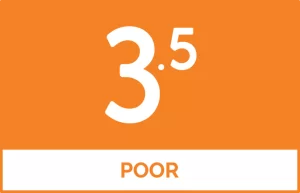 |
|
The good
|
The bad
|
Project CARS 3 was reviewed using a promotional code on Windows PC via Steam, as provided by the publisher. Click here to learn more about Stevivor’s scoring scale.
This article may contain affiliate links, meaning we could earn a small commission if you click-through and make a purchase. Stevivor is an independent outlet and our journalism is in no way influenced by any advertiser or commercial initiative.























